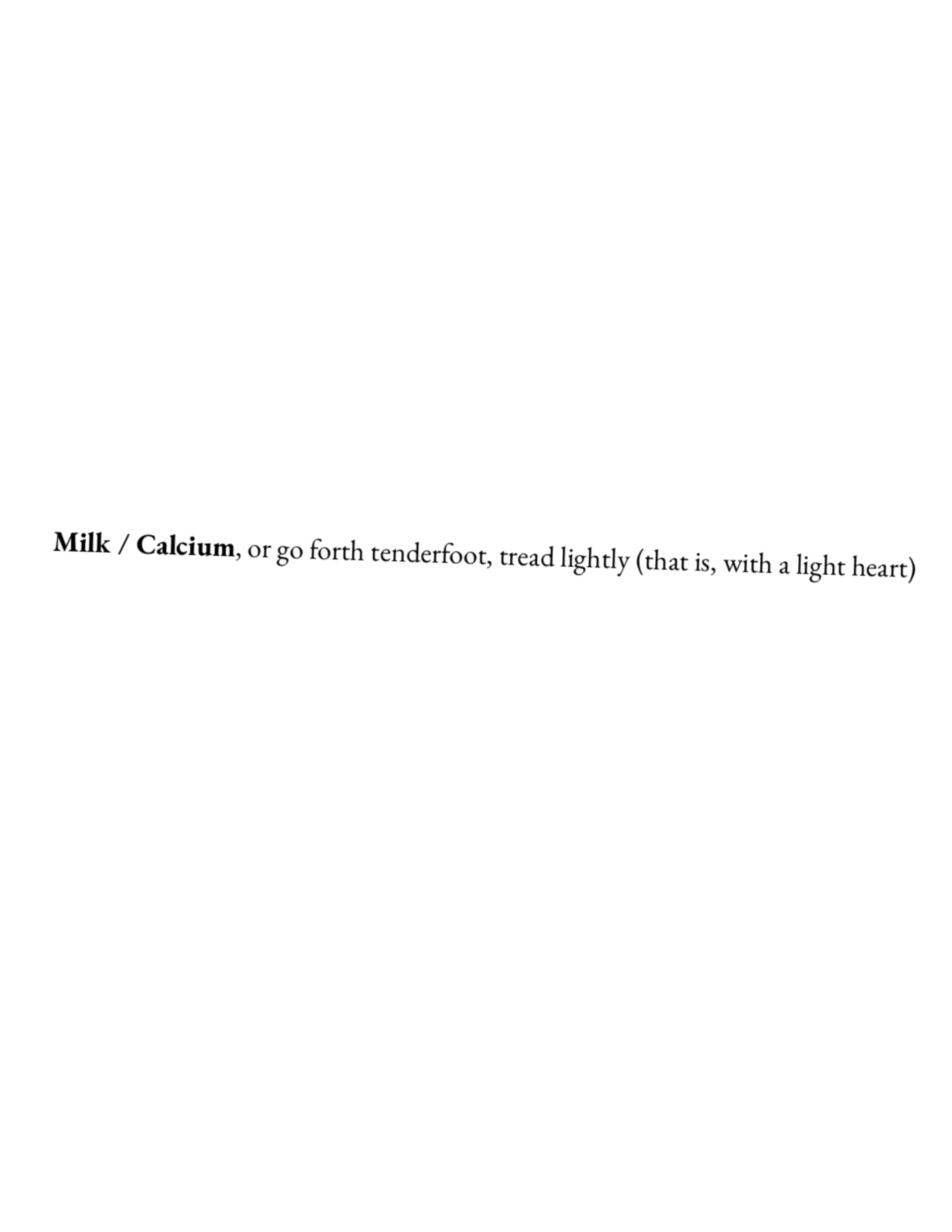[Kimchi Suite]
Contents
[Kimchi Suite] collects writing, sculpture, language, documentation, sound, dance, fermentation, cooking, consumption, listening, holding, performance, tasting, and becoming.
For the purposes of documentation, I’ve organized the content into the following:
After the documentation, I’ll also share some more information about the process and development for [Kimchi Suite].
Performances
Kimchi Pieces
“Kimchi Pieces” feature kimchi that I made in Providence as well as the sounds of the creation and consumption of this kimchi. The piece features a jar of kimchi that is installed along with other ground-level sound pieces. The piece also includes the performance of field recordings made from sounds created and heard in the kimchi-making process. I edited the field recordings into three movements: “Wash”, “Slice to Salt”, and “Make Paste”.
During the performance of the field recordings, I passed out solo, single-serving portions of kimchi for the audience to consume and perform as they wished. I wanted to expand the idea of what the sounds of kimchi could be.
Each person who consumes kimchi during the field recording performance gets to perform a solo that only they can hear within the collective.

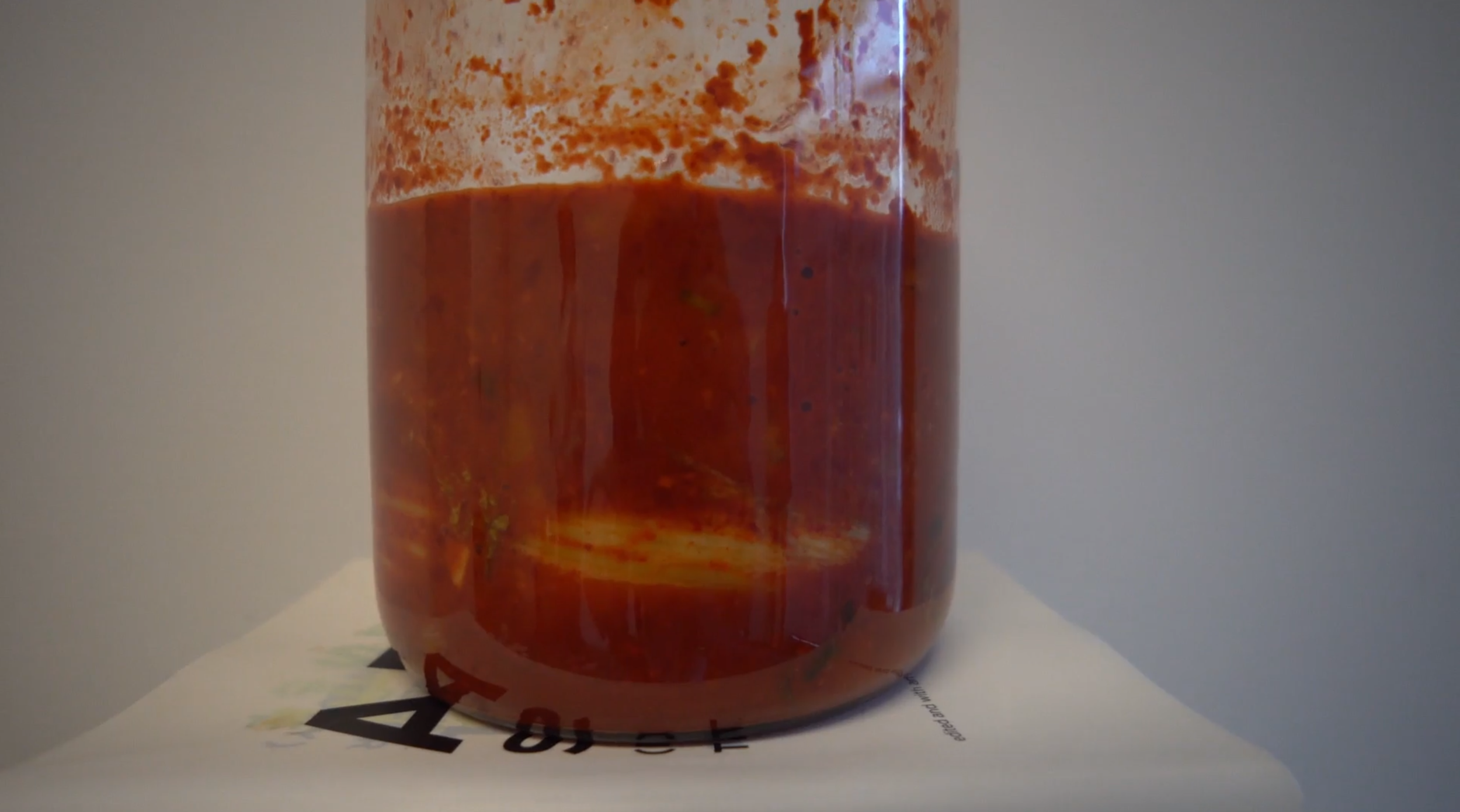
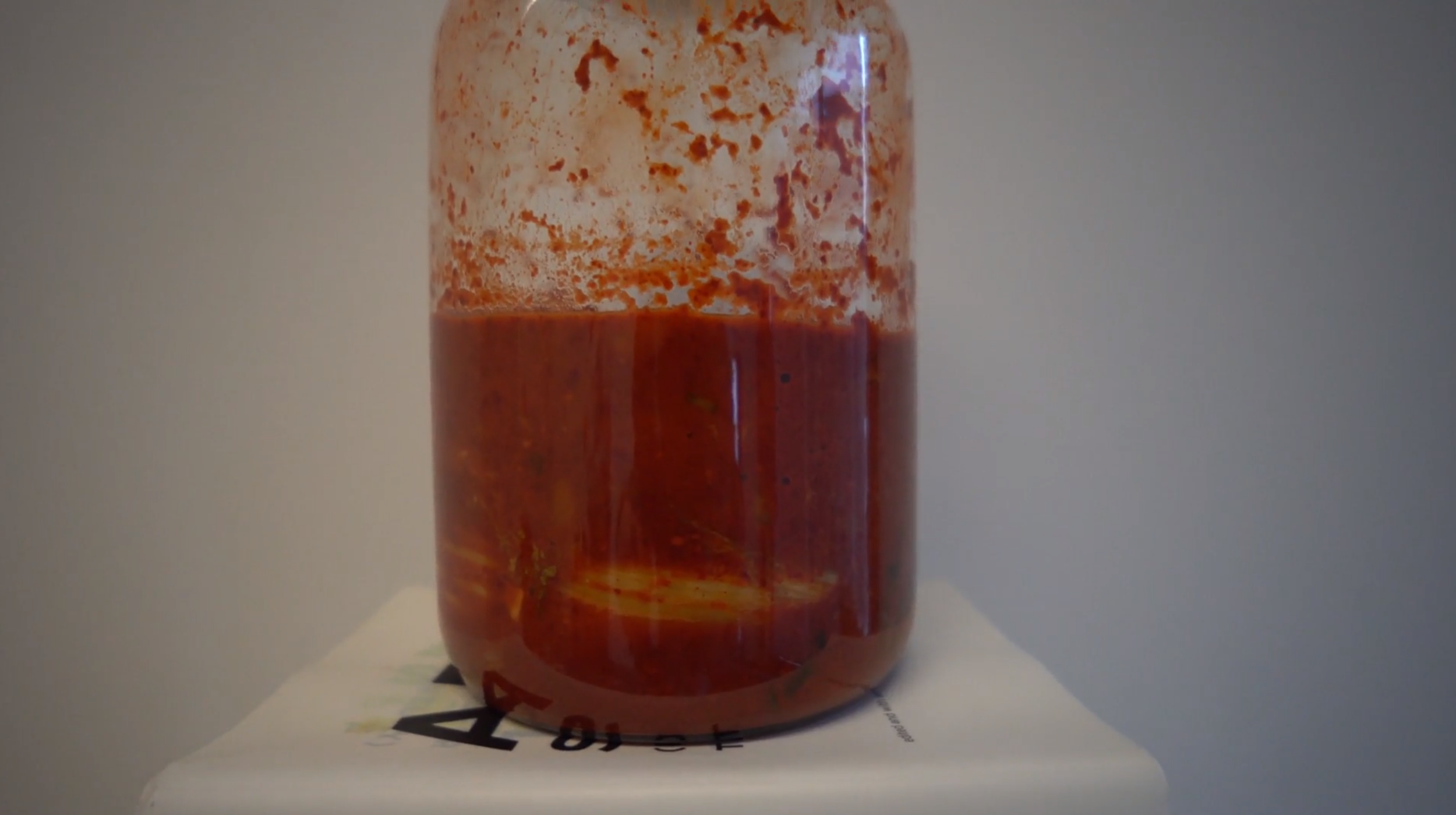

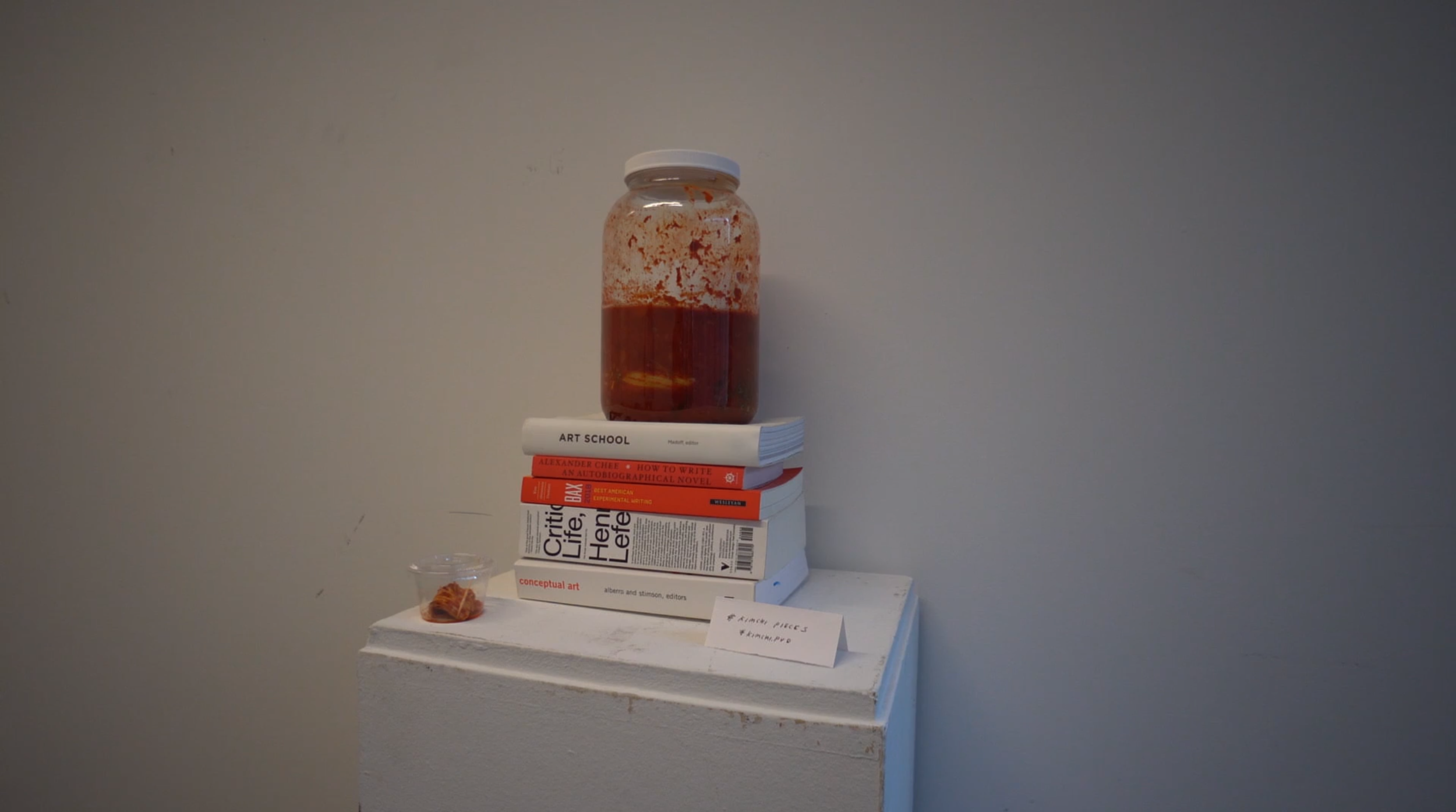
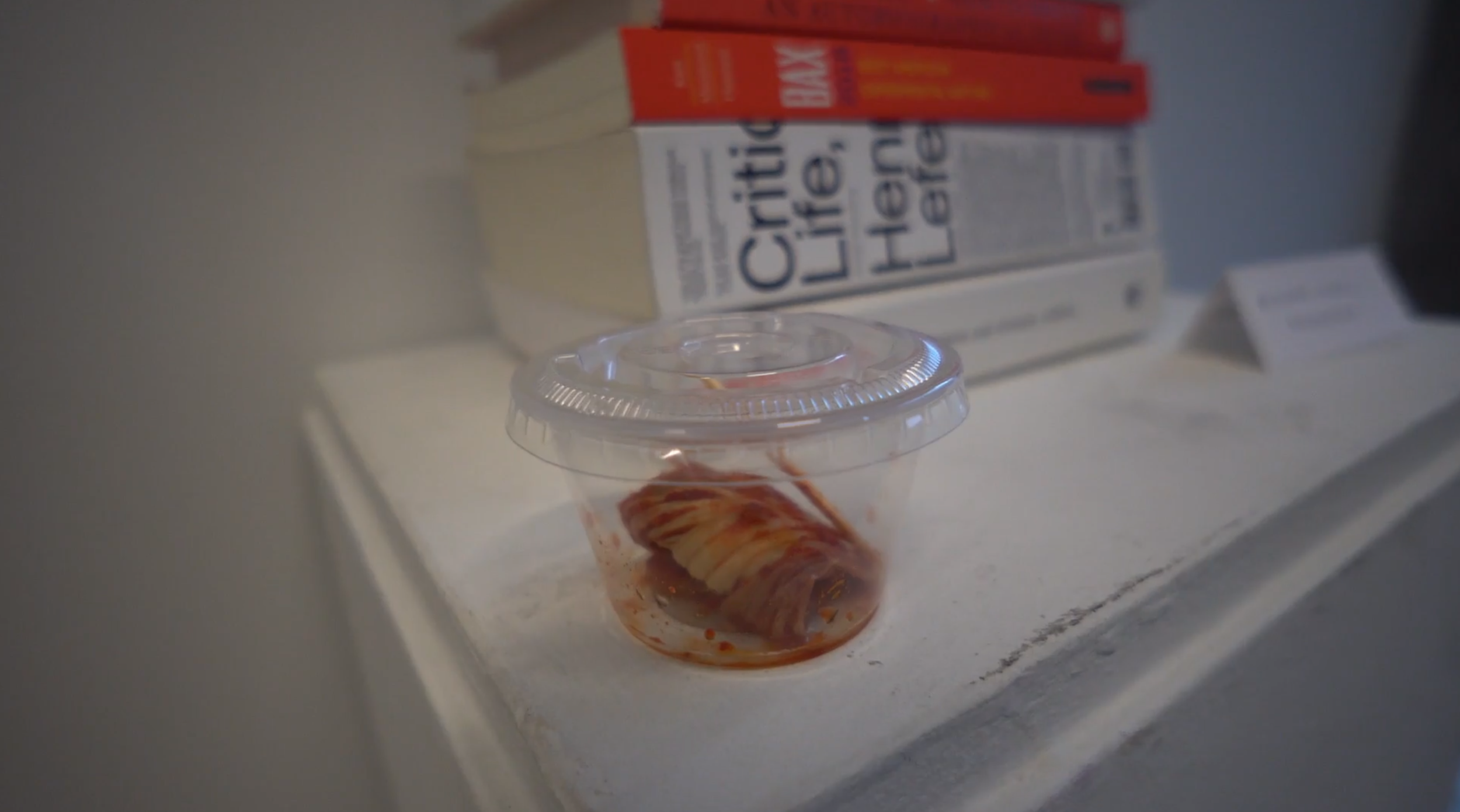
Home Pieces
The “Home Pieces” feature recordings I made based on “고향의 봄” (or “Spring in my Hometown”), one of the most beloved and well-known Korean songs of the past century. I recorded personal renditions of the melody onto voice on a chip sound modules designed for musical / audio cards. I installed the recordings into empty kimchi jars.
For this installation, I placed the jars (sources of “Korean” or “kimchi” sounds) onto pedestals formed by stacks of books from my bookshelf. The books were selected based on their “Korean-ness” and/or their relevance to the theme of home explored in each featured rendition. Some of the books point to the performance of poetry or literariness. Others contain narratives of the Korean diaspora, or point to alternative explorations of home and home-making.
Installed, the jars sit on stacks of books on the ground. Viewers must either bend down or performa a squat to perform these pieces. These jars can be played simultaneously and in a variety of orders and spatial relations. The jars are meant to be picked up and carried around while the recording plays.
Home Piece: "Spring in My Hometown (고향의 봄) on Hohner Melodica"
Home Piece: "Spring in My Hometown (고향의 봄) on Technology Will Save Us Dub Siren"
Home Piece: "Spring in My Hometown (고향의 봄) Mix - DJ CBT"
Home Piece: "Spring in My Hometown (고향의 봄) Extended Club Mix - DJ CBT"
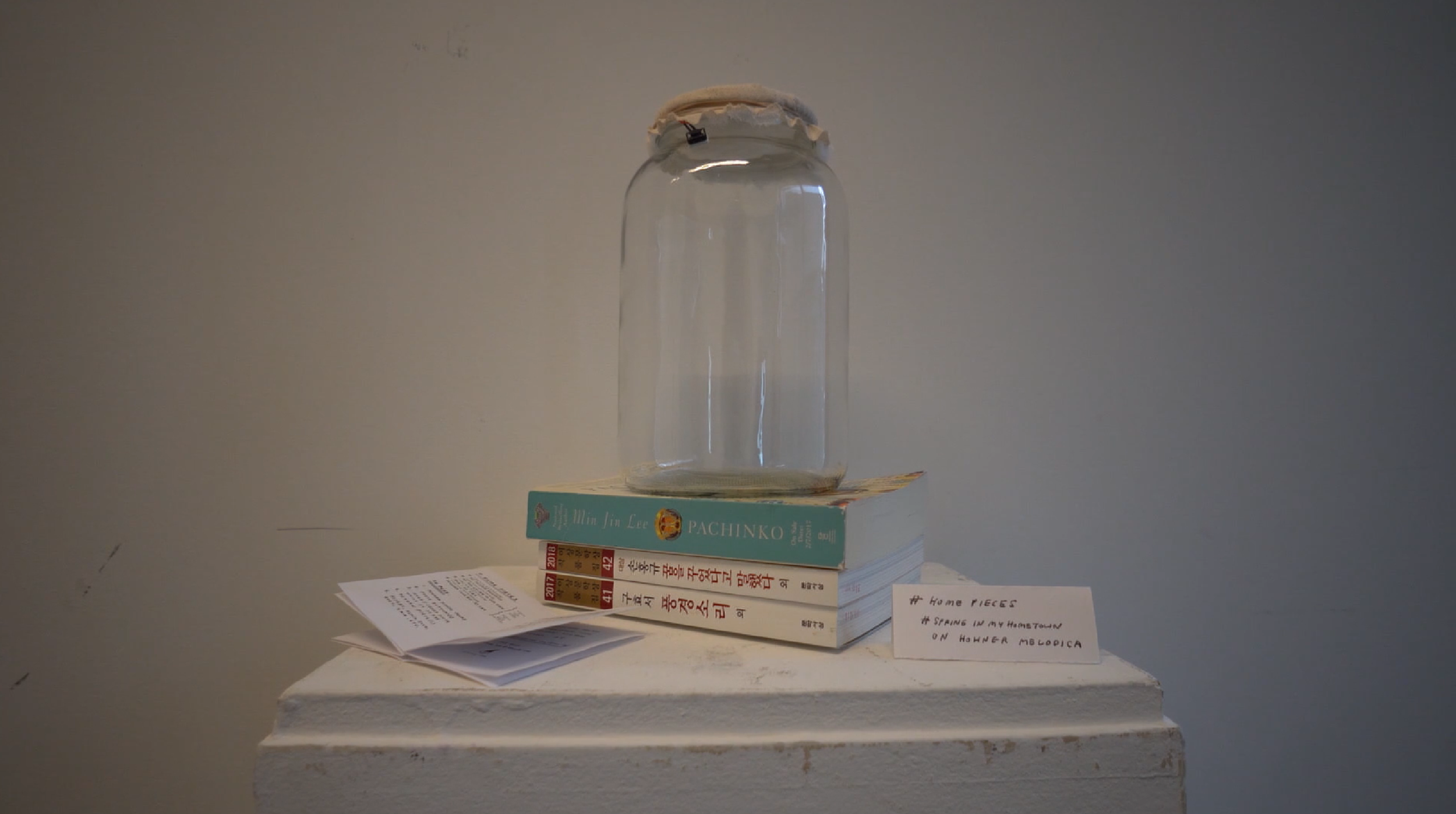
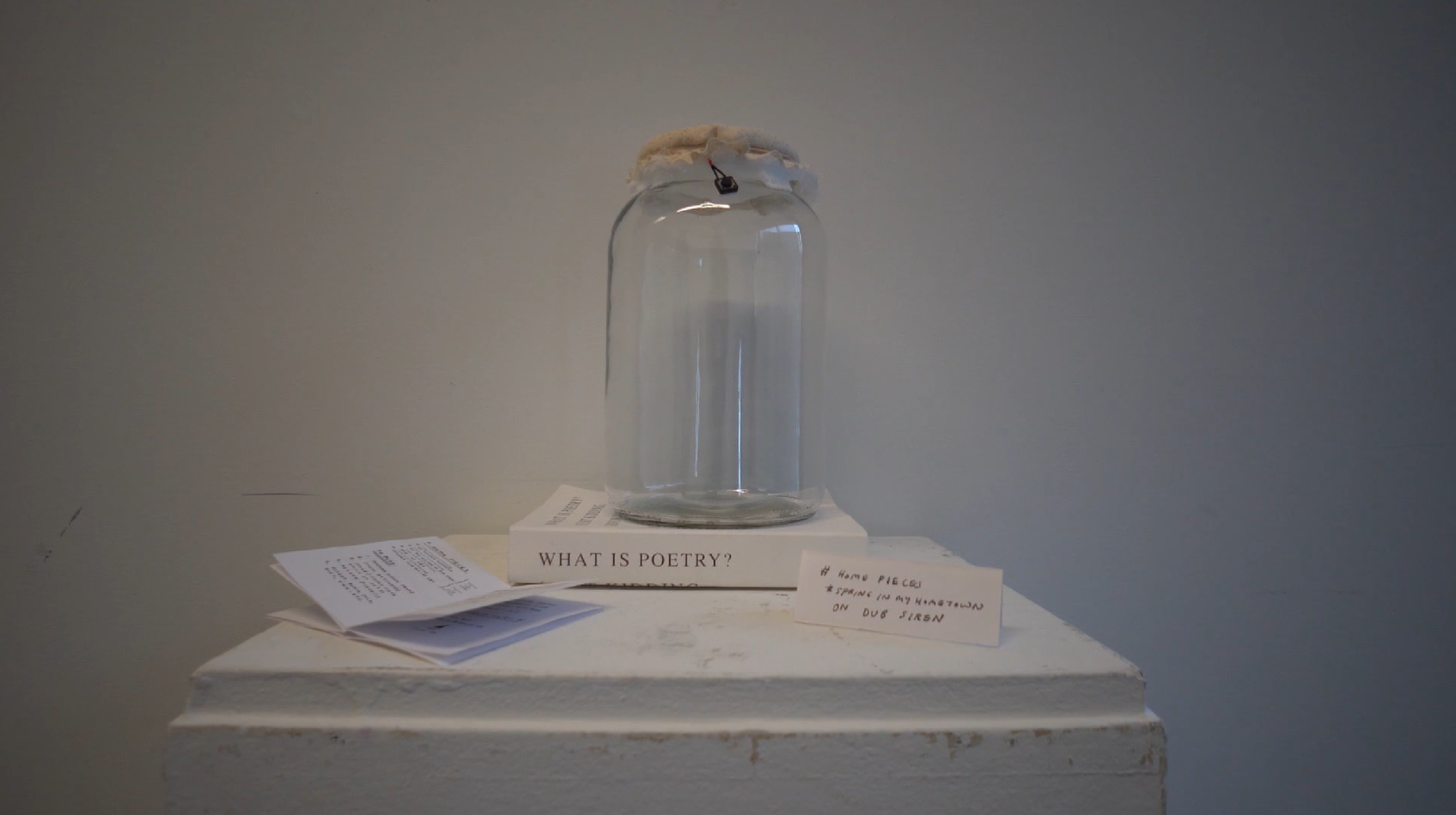
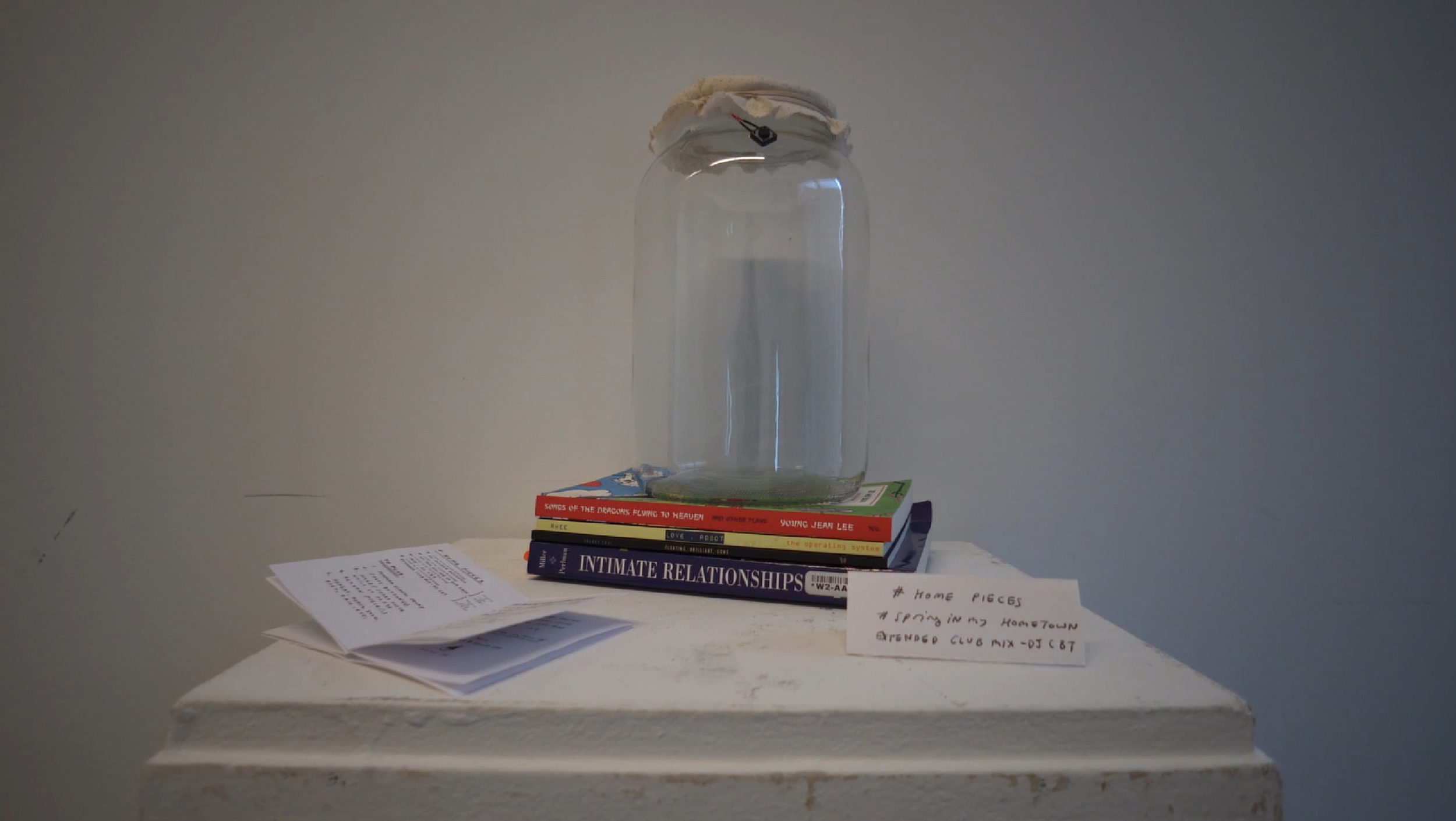


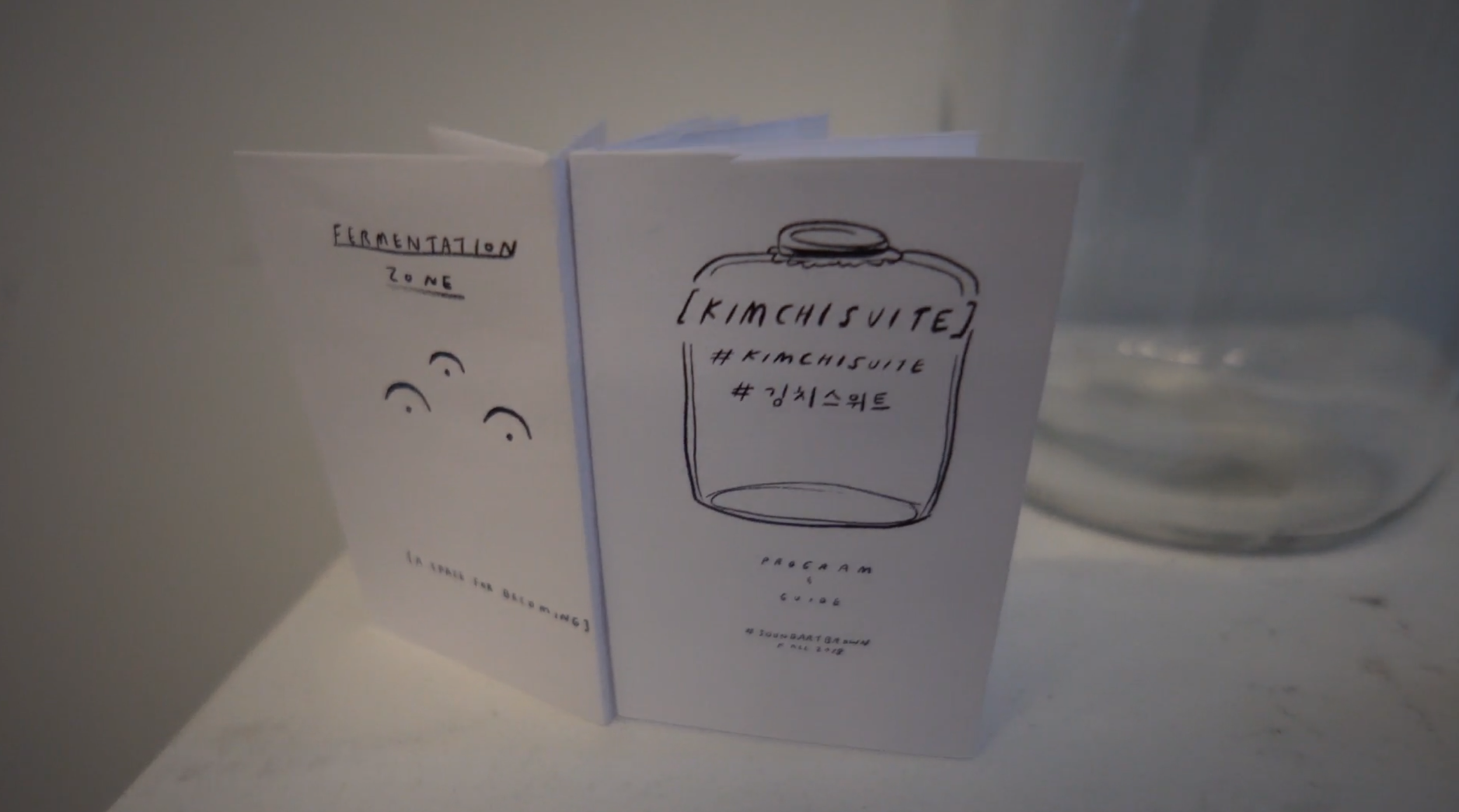
Milk / Calcium Piece
“Milk / Calcium Piece” features a recording I performed of a poem based on an interview with my maternal grandmother.
I wanted this piece to be in conversation with the “Home Pieces” and “Kimchi Piece” installed on ground-level. This piece is the only jar to feature voices. The words become lyrics for a litany on survival.
"Milk / Calcium Piece" jar performance.
This piece is designed so that two separate recordings can be played at the same time to perform a duet. When the two recordings are played together, voices and narratives collide to highlight disjuncture through cacophony. At the same time, the possibility for new melodies and harmonies to form with each play persists.
While placed within a container, the recording asks what can and cannot be contained.
Zines
[Kimchi Suite] Program & Guide: An 8-page folding zine-style musical program for the first [Kimchi Suite] installation and performance as a part of the Fall 2018 Sound Art class show at the Granoff Center for the Creative Arts at Brown University.
Note: Click on images to view the pages in order.
Milk / Calcium, or go forth tenderfoot, tread lightly (that is, with a light heart): An 8-page folding zine-style adaptation of a poem I wrote while translating and transcribing an interview I had with my grandmother a few years ago. The text in this poem also functions as lyrics and a kind of score for the recording I made for the “Milk / Calcium Piece” in [Kimchi Suite].
Note: Click on images to view the pages in order.
Recordings
The playlist includes the recordings I used for [Kimchi Suite].
The recordings are batched into the following three sections:
“Kimchi Piece” was performed for an audience at the Fall 2018 Sound Art class show on Dec. 12th, 2018.
“Home Pieces” and “Milk / Calcium Piece” were recorded onto voice on a chip sound modules to exists as jar performances.
Instagram Stories Highlights
While working [Kimchi Suite], I experimented with documenting my process and sources for connection and resonance. I included some of the highlights as part of the installation.
#kimchisuite
Documentation and commentary on the kimchi-making process. Includes documentation of the making and installation of [Kimchi Suite].
https://www.instagram.com/stories/highlights/17884752688286847/
hashwellsharp
What are the resonances between the symbols for a hash, a well, and a sharp? How do they relate to kimchi jars and kimchi sounds?
“suite”-ness
What is “suite”-ness? Is it a series of dance music, a set of rooms, a retinue, a belonging, a location, an address?
https://www.instagram.com/stories/highlights/17994611362103906/
kimchisquat
A brief introduction to the kimchi squat. A home position for performing Korean-ness. Includes choreography for dance music.
Installation
[Kimchi Suite] was performed and installed at the Granoff Center for the Creative Arts at Brown University on Wednesday, Dec. 12, 2018.
“Home Pieces” and “Milk / Calcium Piece” were installed ground-level in Studio 1.
Instagram Stories Highlights from #kimchisuite and “suite”-ness were projected in a living room near the sound installation.
Copies of zines were included in the installation and projection spaces for the audience to take.
Before the performance of “Kimchi Piece", I announced a list of the ingredients in the kimchi and then passed around single-serve portions of kimchi to folks who were interested in participating.

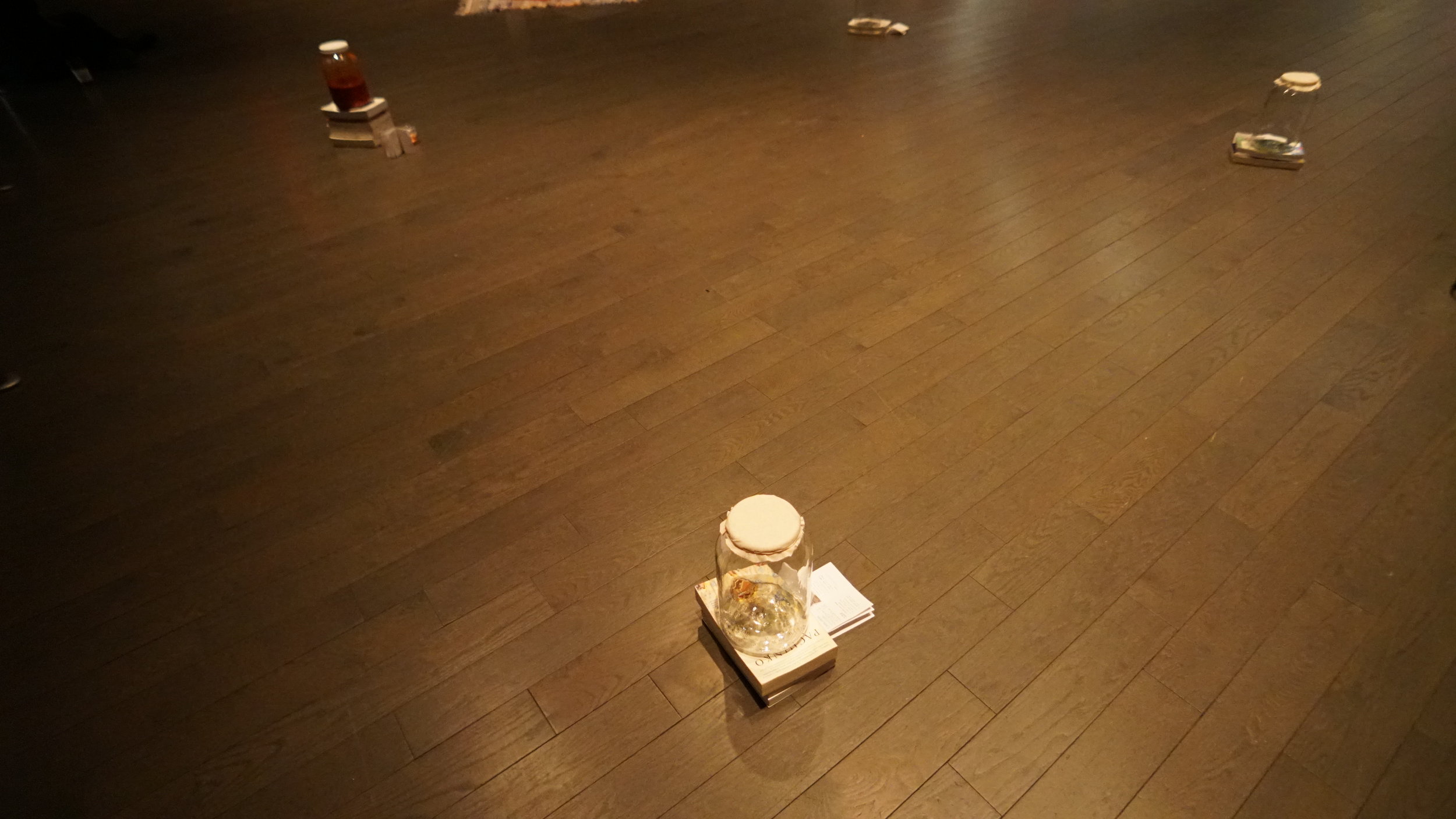
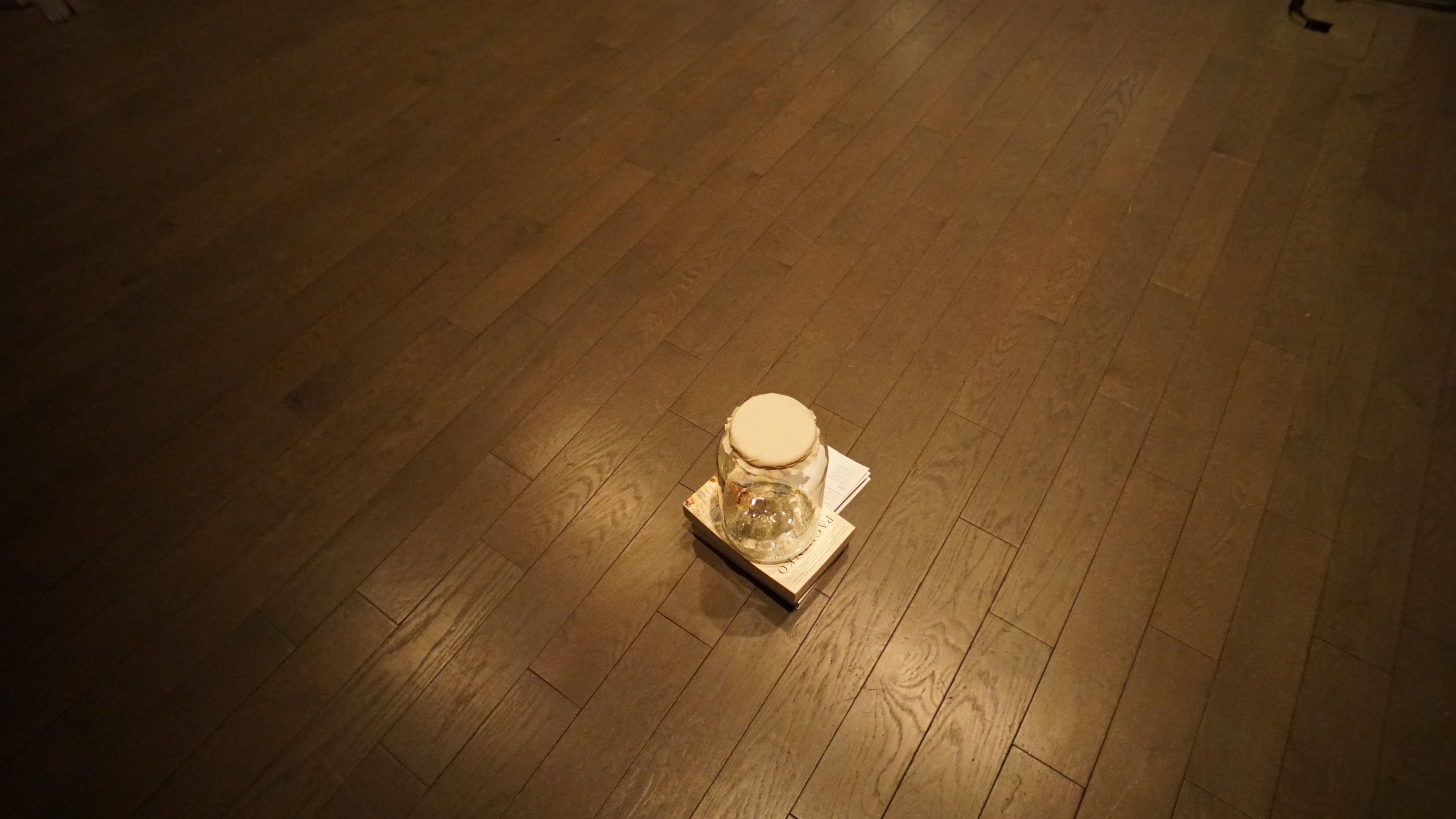
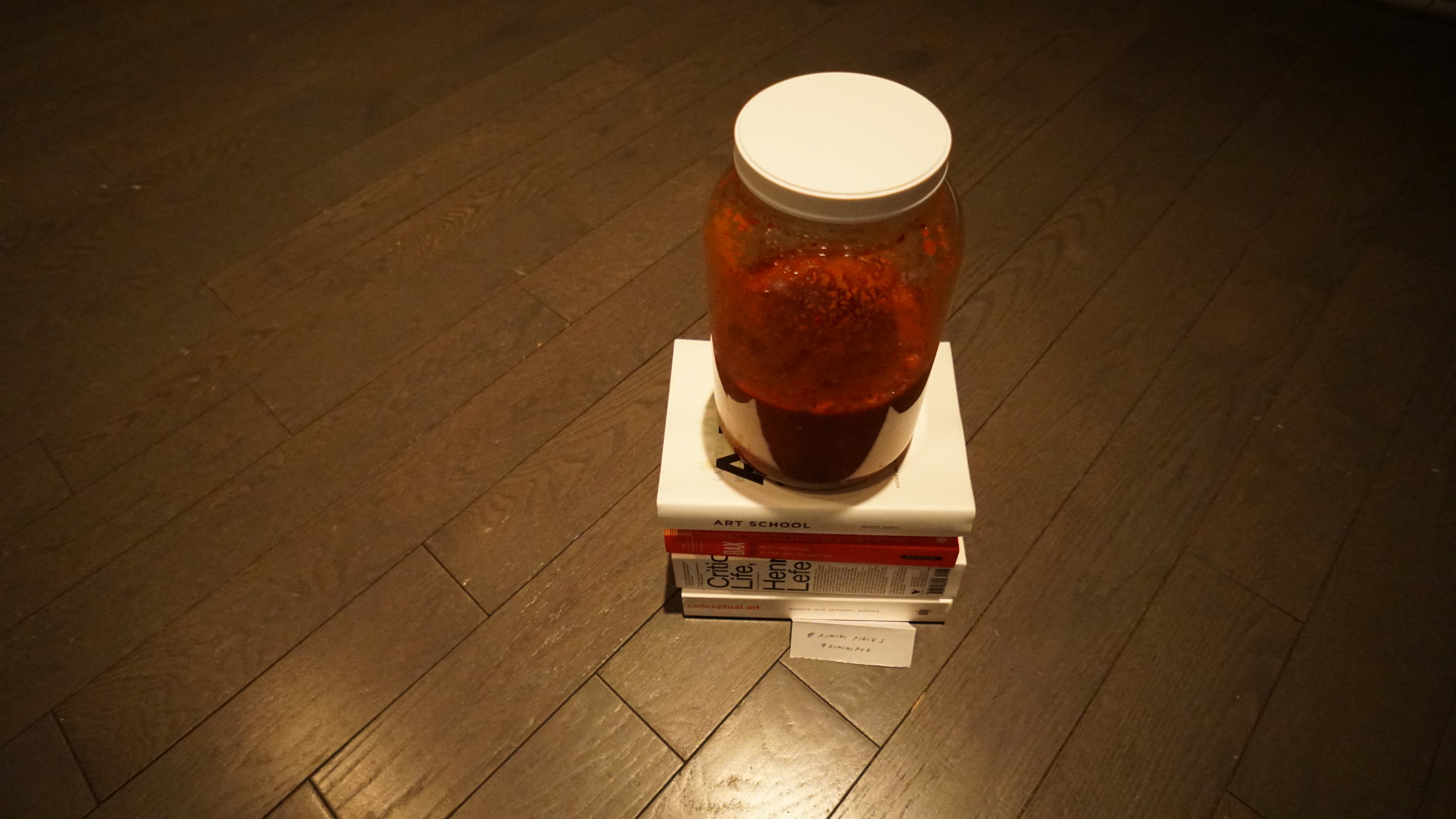
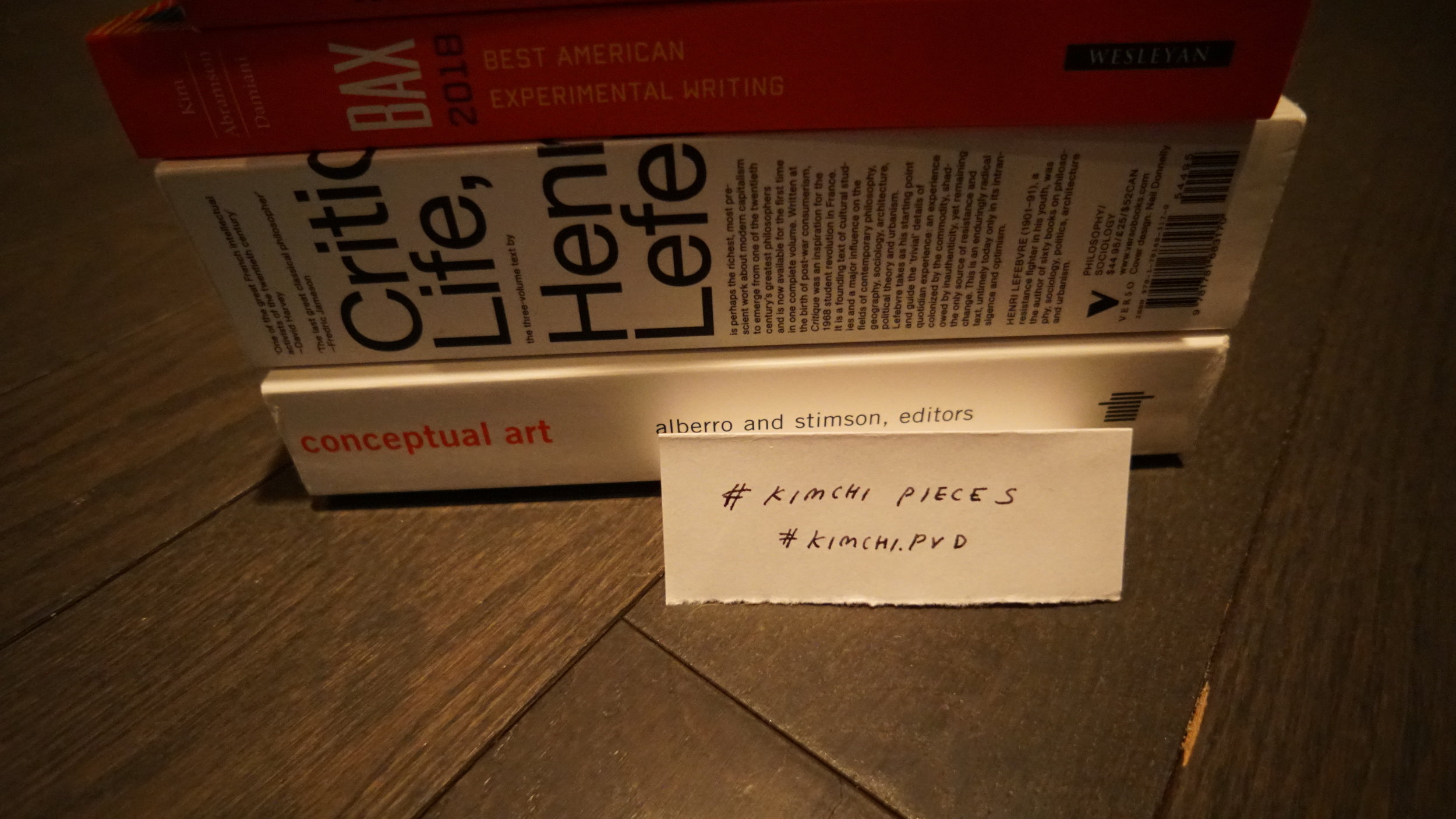
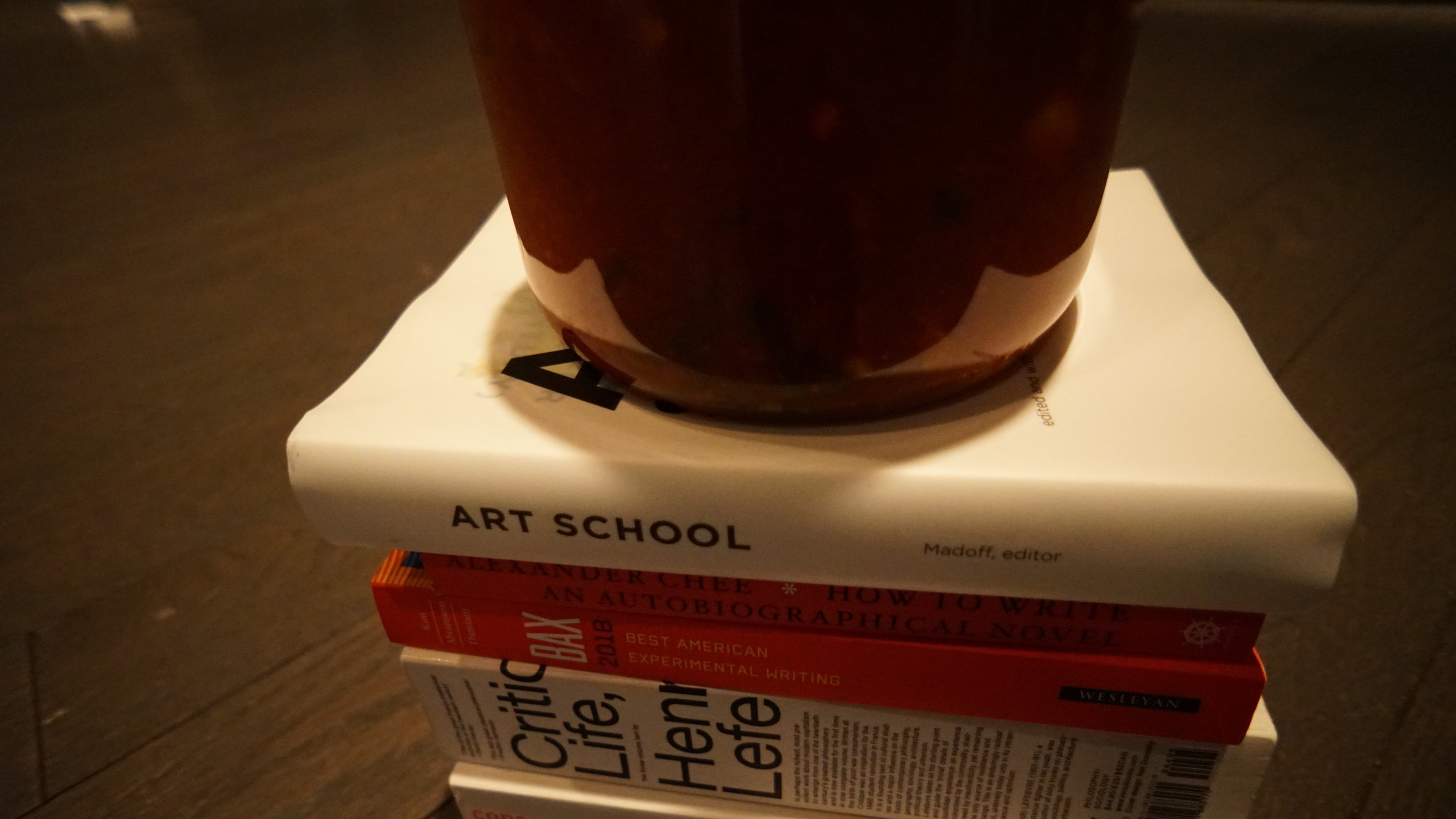
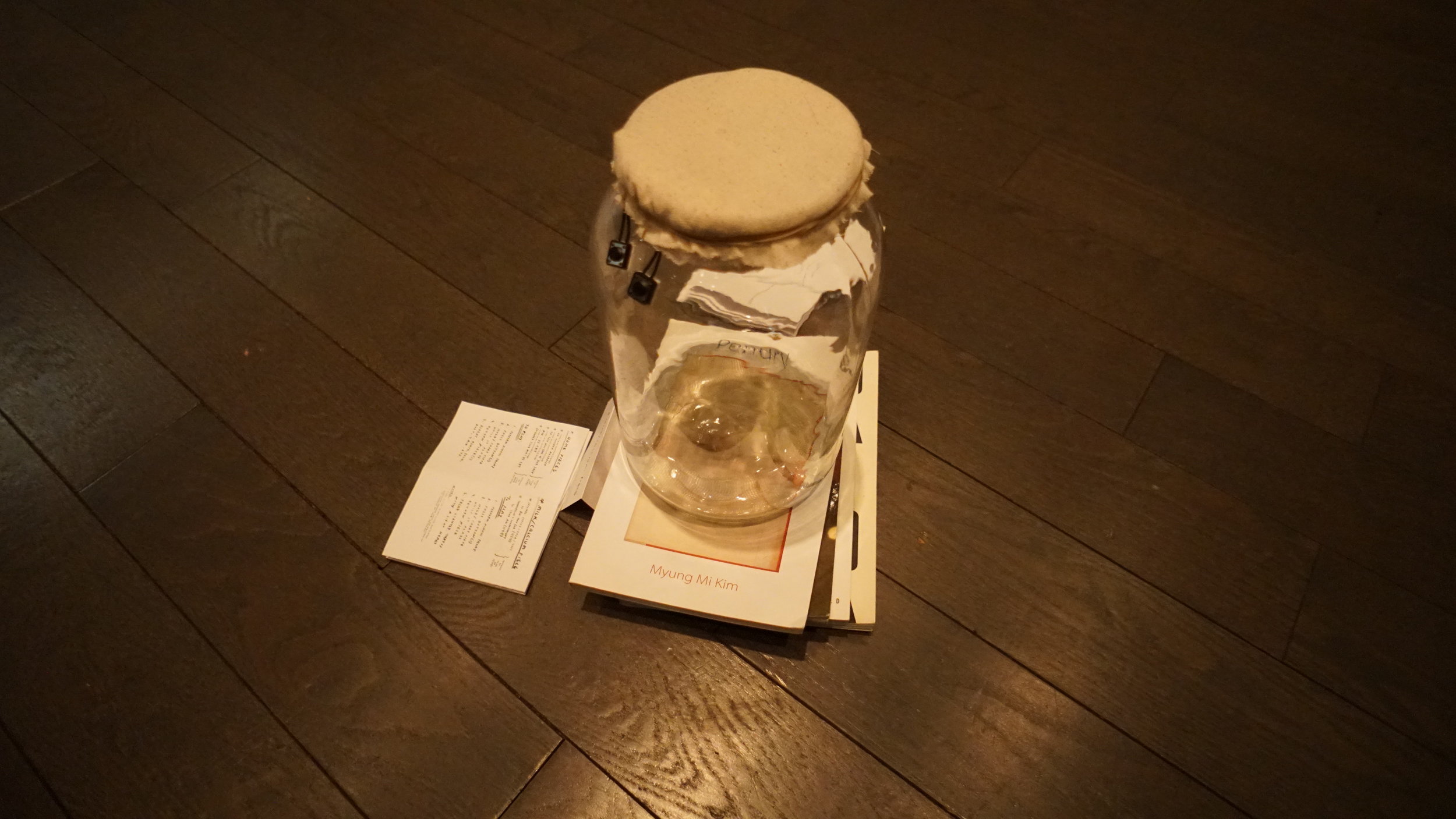

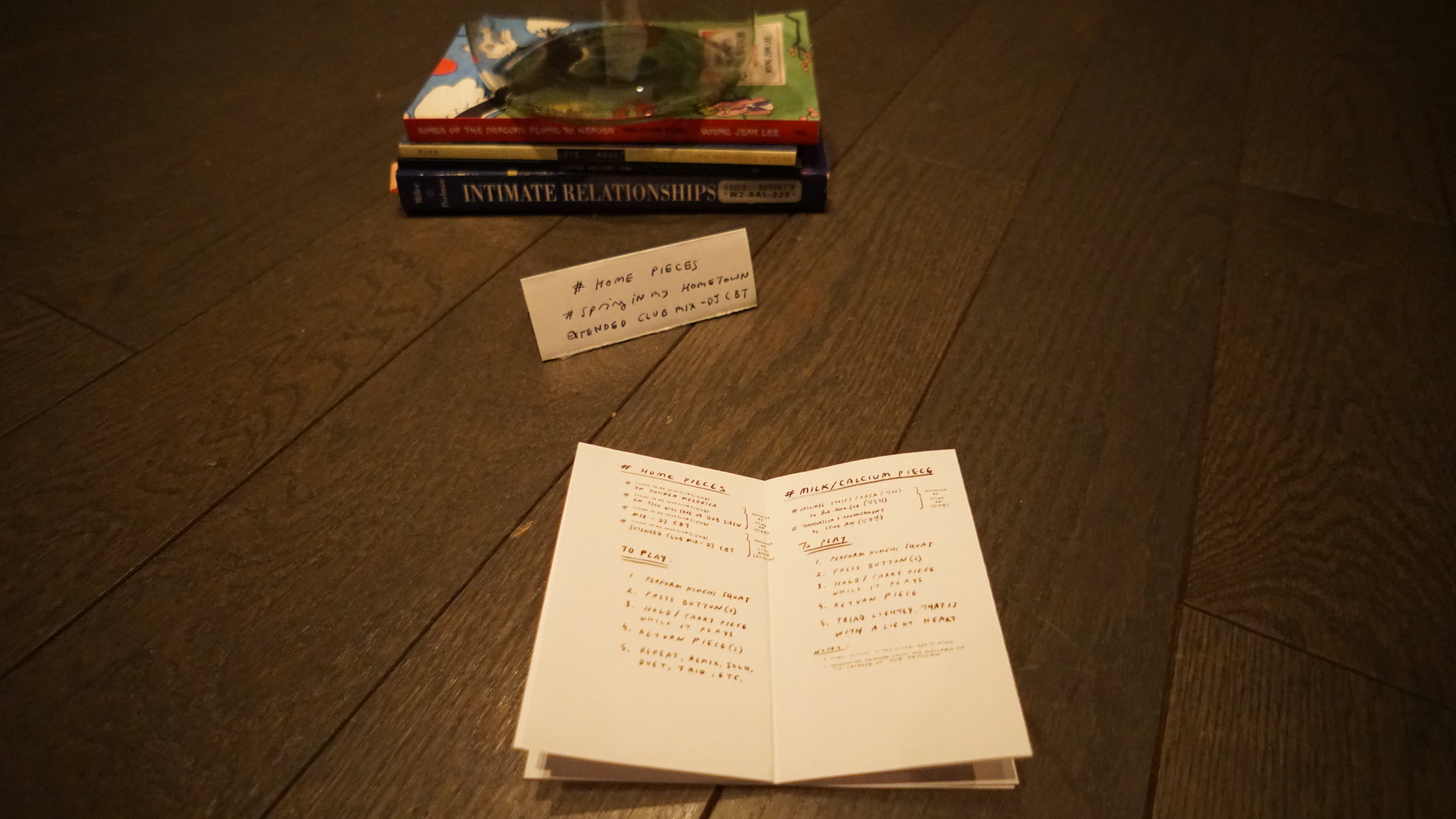
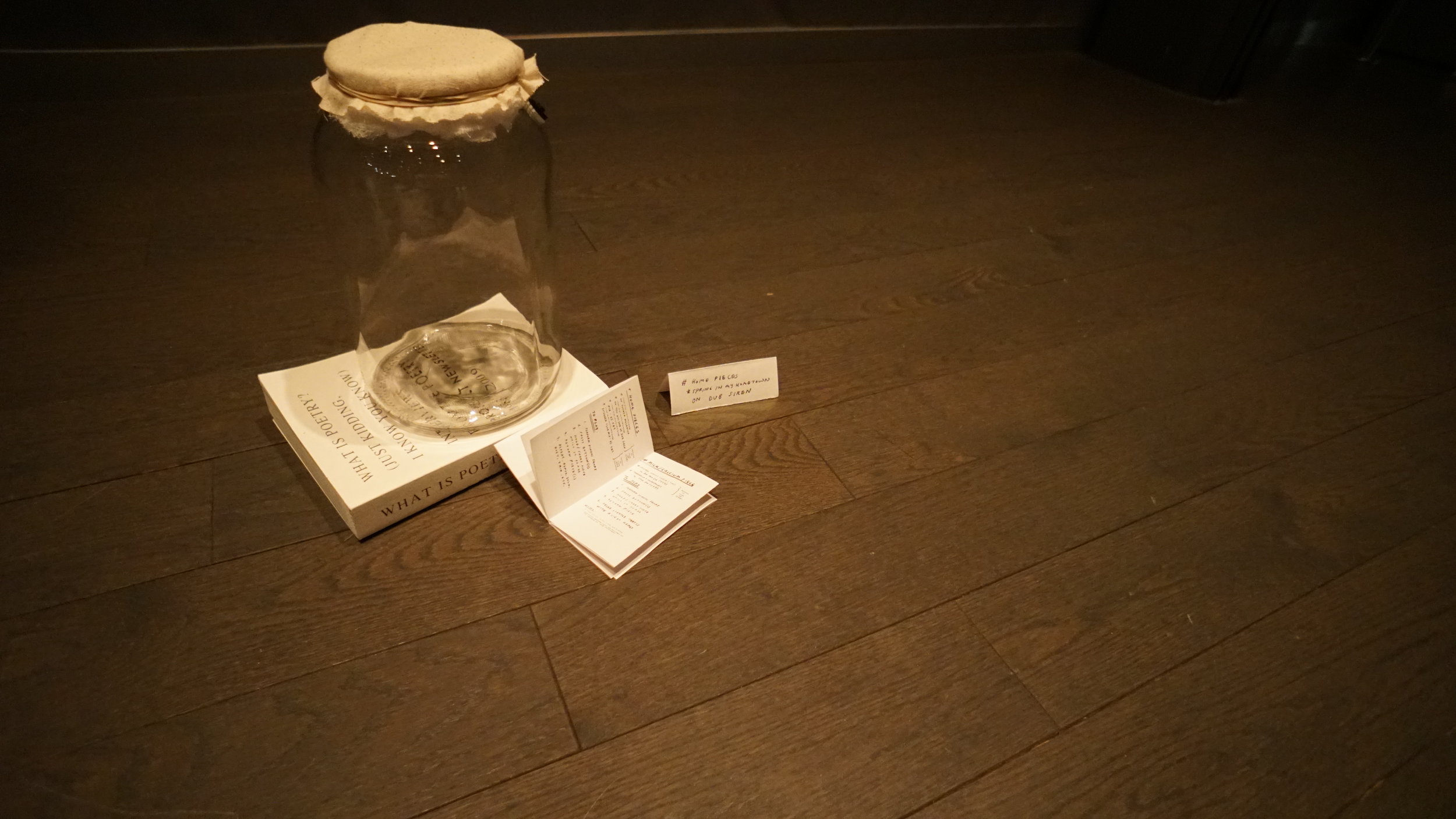
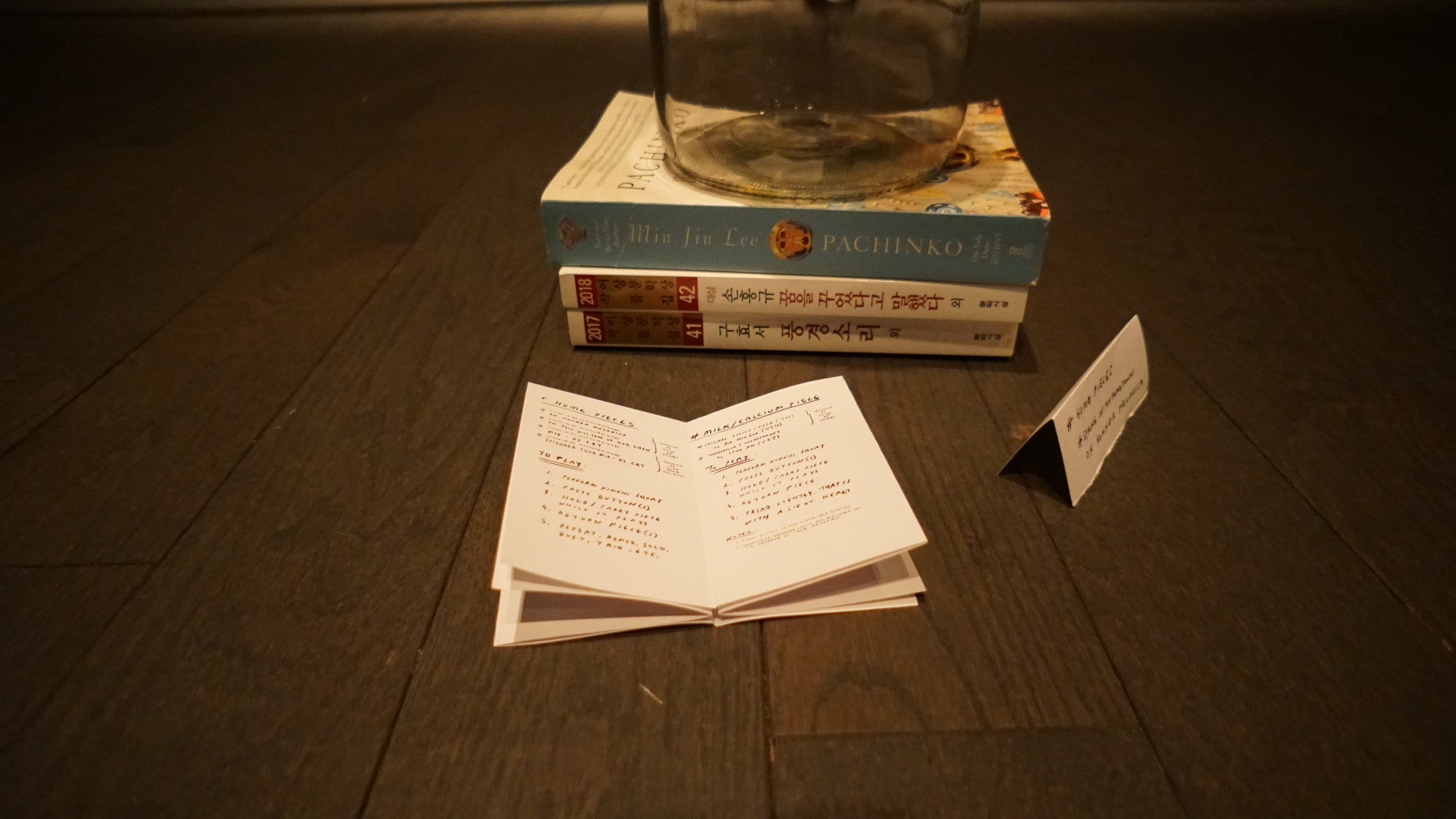
Photo credit (installation photos and video for jar performances): Erik DeLuca
Unmaking [Kimchi Suite]
When I came up with the idea for [Kimchi Suite] in mid-November, I planned on working on a collection, or “suite,” of recordings to be presented as a multi-channel sound installation to synthesize ongoing reflections on my Korean-American identity and family history. I wanted to pursue a multi-channel installation because I was interested in learning more about the medium and wanted to be able to have multiple recordings “play together” as a way to complicate listening to complicate the consumption of “Korean-ness.”
In the original project proposal, I wrote about my desires to “make and share the sounds of consumption while also highlighting the family narratives that I have consumed and view as important aspects of my own family’s Korean history” and “to share my resistance to consuming and replicating hegemonic manifestations of Korean identity that require erasure and silencing.” With [Kimchi Suite] I wished to create a space to explore a sense of “home” while questioning the need or even the possibility for home.
When I shared the project proposal in class, the professor encouraged me to explore beyond the multi-channel installation. Where should the sound come from? Speakers? Should the speakers be located in the same space? Could a jar of kimchi become an actual speaker or a container for a voice and voices? How would people interact with the sound and the physical sources of sound? Would the sounds offer a simulation of home?
I let the feedback sit. While I abandoned the multi-channel installation, the image of kimchi jars that served as speakers stuck with me. The instructor also suggested that I experiment with voice on a chip sound module for audio greeting cards. By this point, I knew that I would need to 1) record sounds for the suite, and 2) present the sounds so that the different recordings would interact with each other in space.
Things started to click once I started making the kimchi and recording the sounds of making kimchi. I experimented with documenting the process using Instagram Stories. I was intrigued by the # hash mark and the idea of creating a collection of associations. By looking into the visual and semantic resonances of the hash mark and hash tag, I started thinking about how the hash mark also evokes a field, a well, a container, a room, and a sharp. I took each of these works to serve as metaphorical frameworks for understanding [Kimchi Suite]. In particular, I was excited to see that the hash mark could be translated into “hometown”. I also explored the many identities, connotations, and denotations of the word “suite”.
Once I started editing the recordings and assembling the jars, I was excited to explore how the installation could become a space for exploring all the different connections around collection, containment, and welling. I wanted to play and write in the resonances of the material I was working with. I pulled out books from my shelf to use as pedestals for the sound jars. I put together a last-minute zine to serve as a program to the performances. I included lyrics to a song that was difficult to listen to. I created new Highlights collections on Instagram to share animated moments of connection and documentation.
While I wasn’t able to capture the sound of kimchi fermenting for [Kimchi Suite], I could hear the fermentation bubbling forth among the different pieces.
Kimchi inspiration from the following sources:
“Napa cabbage kimchi and radish kimchi” recipe from Maangchi, https://www.maangchi.com/recipe/napa-cabbage-kimchi
“The Global Hansik Campaign and the Commodification of Korean Cuisine” by Katarzyna J. Cwiertka from the Korean Popular Culture Reader (Duke University Press, 2014)
![Excerpt from “[Kimchi Suite] Program and Guide” zine.](https://images.squarespace-cdn.com/content/v1/53549419e4b0b5927b88df24/1545200506855-KIU1ZJ3IS3PBW4X3LNH4/Untitled_Artwork.png)

![Excerpt from “[Kimchi Suite] Program and Guide” zine.](https://images.squarespace-cdn.com/content/v1/53549419e4b0b5927b88df24/1545205149585-ZZ0EN9RBM1A1IN31ISD5/page+3.png)

![Excerpt from “[Kimchi Suite] Program and Guide” zine.](https://images.squarespace-cdn.com/content/v1/53549419e4b0b5927b88df24/1545202956946-A2HI1ZF9CLQ8XYU5XHOP/page+4.png)





![Excerpt from “[Kimchi Suite] Program and Guide” zine.](https://images.squarespace-cdn.com/content/v1/53549419e4b0b5927b88df24/1545203657351-2TANU4JWQUM4JVHM7QJU/page+5.png)









